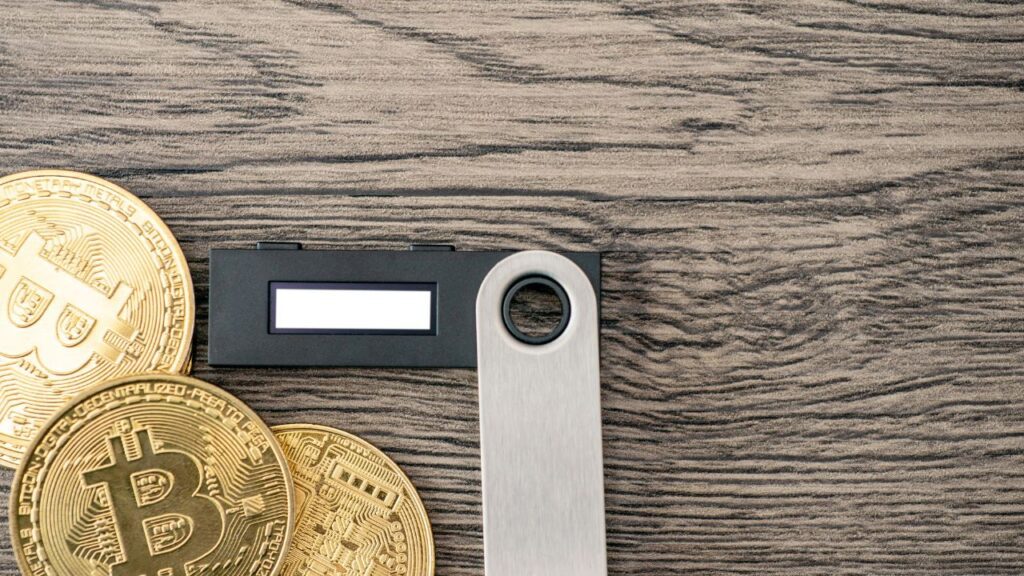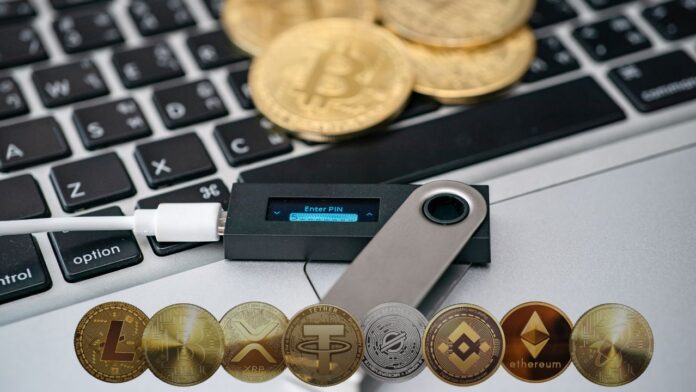Cryptocurrency has become one of the most talked-about financial assets in the world. More people are investing in digital currencies like Bitcoin, Ethereum, and stablecoins. But while the excitement around crypto grows, so do the risks. Hacks, scams, lost keys, and phishing attacks have cost investors millions of dollars.
If you are wondering how to store crypto safely, this guide is for you. Whether you’re a beginner or a seasoned trader, protecting your cryptocurrency is just as important as buying it. In this guide, we’ll walk you through seven proven steps to keep your crypto safe.
Step 1: Choose the Right Type of Wallet
The first step in securing your digital assets is choosing the right wallet. There are two main types of wallets: hot wallets and cold wallets.
Hot Wallets vs Cold Wallets
|
Wallet Type |
Description |
Best For |
Risks |
|
Hot Wallet |
Connected to the internet (e.g., mobile apps, browser extensions) |
Quick access, daily trading |
Susceptible to hacks, malware |
|
Cold Wallet |
Offline storage (e.g., hardware or paper wallets) |
Long-term storage |
Less convenient, risk of physical loss |
Hot wallets are convenient and ideal for daily transactions. But they are vulnerable to online threats. Cold wallets are safer for storing large amounts of crypto since they remain offline and away from hackers.
Recommended Wallet Types
- Mobile Wallets: Trust Wallet, MetaMask (hot wallets)
- Desktop Wallets: Exodus, Electrum
- Hardware Wallets: Ledger Nano S, Trezor (cold wallets)
- Paper Wallets: A printed QR code with public and private keys
Always research thoroughly before choosing any wallet. For secure crypto wallets, ensure the provider is trusted and the software is regularly updated.
Step 2: Use Hardware Wallets for Long-Term Storage

When it comes to long-term cryptocurrency storage, hardware wallets are the safest option.
Why Hardware Wallets Are Safer
Hardware wallets store your private keys offline. This makes them immune to online attacks, even if your computer is infected with malware. Popular options like Ledger and Trezor support multiple cryptocurrencies and come with backup features.
|
Brand |
Model |
Approx. Price |
Supported Coins |
|
Ledger |
Nano S Plus |
$79 |
5,500+ |
|
Trezor |
Model T |
$219 |
1,000+ |
Setting Up a Hardware Wallet Properly
- Buy only from official sites: Avoid third-party sellers.
- Initialize the wallet: Follow the manual and set up on a clean computer.
- Secure your recovery phrase: This is your only backup.
- Update firmware regularly to fix bugs and improve security.
Using cold storage like hardware wallets gives you full control over your crypto and adds an important layer of protection.
Step 3: Enable Two-Factor Authentication (2FA)
Two-factor authentication adds an extra layer of protection to your accounts.
Extra Security for Exchanges and Hot Wallets
2FA means you’ll need to verify your identity using two forms of authentication: a password and a one-time code sent to your mobile device or app. Most crypto exchanges and hot wallets support 2FA.
Popular 2FA apps:
- Google Authenticator
- Authy
- Microsoft Authenticator
|
Platform |
2FA Type |
Recommended? |
|
Binance |
App-based |
Yes |
|
Coinbase |
SMS and App |
App preferred |
|
Kraken |
App + YubiKey |
Highly secure |
Best Practices for 2FA Usage
- Avoid using SMS-based 2FA due to SIM-swapping risks.
- Always keep backup codes stored safely offline.
- Enable 2FA on both exchange accounts and wallet logins.
2FA is one of the simplest yet most powerful ways to boost your crypto security.
Step 4: Create and Store Backups Securely
Losing access to your crypto wallet can mean losing your funds permanently. That’s why secure backups are essential.
Why Backups Matter
Your crypto wallet relies on private keys and seed phrases. If you lose access to your device and don’t have a backup, your coins may be gone forever.
Where and How to Store Backups
|
Backup Type |
Storage Option |
Security Level |
|
Seed Phrase |
Written on paper, stored in a safe |
High |
|
USB Backup |
Encrypted USB drive |
High |
|
Cloud Storage |
Encrypted file with strong password |
Medium (not recommended) |
Tips for storing backups:
- Do not take photos of seed phrases.
- Avoid cloud storage unless encrypted.
- Use metal wallets to protect against fire/water damage.
Step 5: Keep Your Software Updated

Outdated software is one of the most common ways hackers exploit wallets and exchanges.
Regular Wallet and Firmware Updates
Whether it’s your mobile wallet, hardware wallet, or crypto app, make sure it’s always running the latest version.
|
Platform |
Update Frequency |
Why Important? |
|
MetaMask |
Frequent |
Patches bugs, adds features |
|
Ledger Live |
Regular |
Improves wallet firmware |
|
Trust Wallet |
Monthly |
Fixes vulnerabilities |
How to Check for Updates Safely
- Use only official websites or app stores.
- Verify download URLs.
- Subscribe to newsletters or alerts from your wallet provider.
Software updates are often your first defense against emerging threats.
Step 6: Avoid Public Wi-Fi and Phishing Scams
Online fraud is a major threat to cryptocurrency holders. Phishing scams and unsecure connections can lead to stolen assets.
Recognizing Phishing Tactics
Phishing is when attackers trick you into giving away private information. This could happen via fake websites, emails, or social media messages.
Common signs of phishing:
- Misspelled domains (e.g., “binanc3.com”)
- Unsolicited password reset requests
- Links asking for private keys
Safe Browsing Practices
|
Method |
Description |
|
Use a VPN |
Protects you on public networks |
|
Bookmark sites |
Prevents typo-based phishing |
|
Install antivirus |
Blocks malware and phishing attempts |
Avoiding scams starts with knowing what to look for. When in doubt, don’t click.
Step 7: Use Multi-Signature Wallets for Extra Protection
A multi-signature (multi-sig) wallet adds another layer of control over your crypto transactions.
What is a Multi-Sig Wallet?
A multi-sig wallet requires two or more private keys to approve a transaction. This setup is ideal for joint accounts or business funds.
|
Feature |
Benefit |
|
2-of-3 Signatures |
Adds redundancy |
|
Shared Control |
Prevents single-point failure |
|
Higher Security |
Stops unauthorized transfers |
How to Set It Up
- Choose a wallet provider that supports multi-sig (e.g., Electrum, Casa, BitGo)
- Configure the number of required signers (e.g., 2-of-3)
- Distribute keys among trusted devices or people
Multi-signature wallets are especially useful for corporate treasuries or family funds.
Bonus Tips for Extra Crypto Security
Never post screenshots or talk about your crypto stash online. It makes you a target.
Use Separate Wallets for Daily Use and Savings
Keep one wallet for small, daily use, and store the bulk of your funds in cold storage.
Monitor Transactions and Set Alerts
Enable alerts from exchanges and wallets for every login or withdrawal.
Takeaways
Storing your cryptocurrency safely is not a one-time task. It’s an ongoing responsibility. By following these 7 steps—choosing the right wallet, using hardware wallets, enabling 2FA, backing up properly, updating software, avoiding phishing, and using multi-signature wallets—you’ll significantly reduce your risk of loss.
Taking the time to learn and implement these practices is essential in protecting your investments in a decentralized financial world.
Whether you’re storing Bitcoin, Ethereum, or altcoins, remember that cryptocurrency storage is only as strong as the weakest link in your security chain.


















![10 Countries With the Best Healthcare in the World [Statistical Analysis] Countries With the Best Healthcare in the World](https://articleify.com/wp-content/uploads/2025/07/Countries-With-the-Best-Healthcare-in-the-World-1-150x150.jpg)










